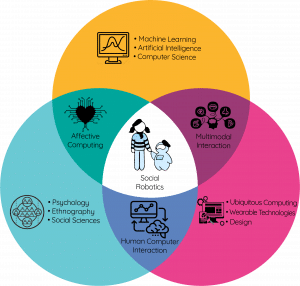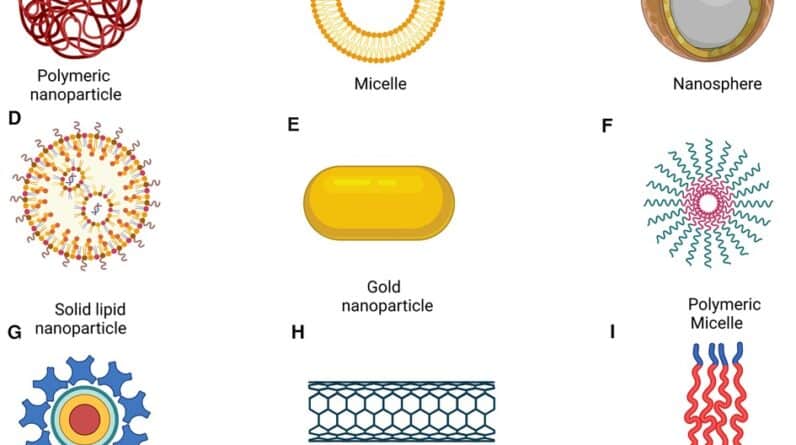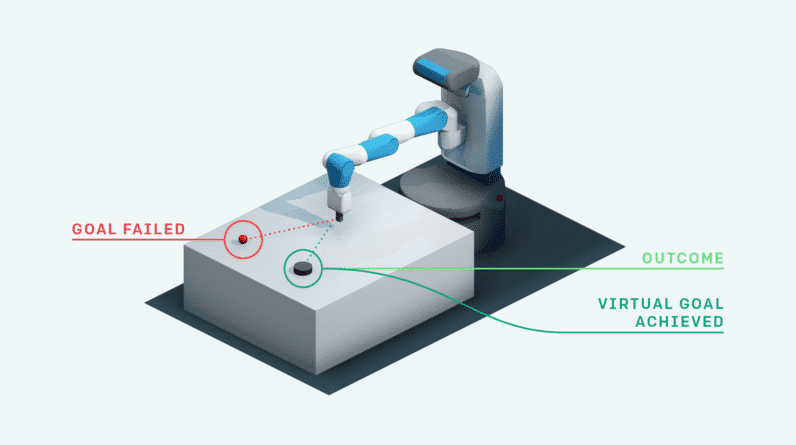In the world of pharmaceutical research, the integration of artificial intelligence (AI) has emerged as a game-changer. By harnessing the power of AI, scientists and researchers are able to accelerate drug discovery processes like never before. From identifying potential candidates for drug development to optimizing clinical trials, AI is transforming the landscape of pharmaceutical research. This article explores the profound impact of AI in drug discovery and how it is revolutionizing the way new medicines are developed.

Introduction
Welcome to this comprehensive article on the benefits of AI in drug discovery. In recent years, artificial intelligence (AI) has revolutionized various industries, including pharmaceutical research. By applying AI algorithms and machine learning techniques, drug discovery processes have become more efficient, allowing researchers to identify potential drug candidates faster and with higher accuracy. In this article, we will provide an overview of the drug discovery process and explore how AI is enhancing each step, from data analysis and management to clinical trial optimization. So, let’s dive in!
Overview of Drug Discovery Process
The drug discovery process is a complex and time-consuming journey from identifying a disease target to developing an effective drug. Traditionally, this process involves multiple stages, including data analysis and management, target identification and validation, compound screening, lead optimization, clinical trials, and eventually, drug approval. Each step is crucial and requires extensive research and experimentation. However, with the advent of AI, these steps are being streamlined and accelerated, revolutionizing the entire drug discovery process.

Benefits of AI in Drug Discovery
AI has brought numerous benefits to the field of drug discovery. Firstly, AI algorithms provide efficient and accurate data analysis, allowing researchers to process vast amounts of data in a fraction of the time it would take using traditional methods. This helps in identifying potential drug targets and optimizing compounds for better drug design. Additionally, AI allows researchers to uncover complex patterns and relationships in large datasets, enabling them to make more informed decisions and select the most promising drug candidates. Furthermore, AI improves the efficiency of clinical trials by helping researchers identify suitable patients and optimize trial designs. Overall, AI is transforming drug discovery, making it faster, more precise, and cost-effective.
1. Data Analysis and Management
1.1 Data Collection and Integration
The first step in the drug discovery process is collecting and integrating relevant data. This includes data from various sources, such as genomic data, chemical libraries, and clinical trial data. AI tools can streamline this process by automatically extracting and organizing the data, ensuring its accuracy and completeness. AI algorithms can also integrate different types of data, such as genetic and biochemical data, to provide a comprehensive view of the disease and potential drug targets. By automating data collection and integration, AI saves time, reduces errors, and enables researchers to focus on analyzing the data.
1.2. Validation and Annotation
Once the data is collected and integrated, it needs to be validated and annotated. AI can assist in this process by automatically validating the quality of data, flagging any inconsistencies or errors. AI algorithms can also annotate the data, assigning biological, chemical, or clinical relevance to different elements. This annotation process helps researchers identify patterns and relationships within the data, leading to more accurate target identification and compound screening. By leveraging AI for data validation and annotation, researchers can ensure the reliability and credibility of their findings.

2. Target Identification and Validation
2.1. Identification of Disease Targets
Identifying disease targets is a crucial step in drug discovery. AI tools can analyze large datasets and identify potential targets by comparing disease-specific data with existing knowledge. By detecting anomalies and patterns in genetic and biochemical data, AI algorithms can pinpoint specific proteins, enzymes, or genes that play a significant role in the disease’s development. This knowledge helps researchers prioritize potential drug targets and focus their efforts on developing therapies that directly address the underlying causes of the disease.
2.2. Target Validation
After identifying potential disease targets, the next step is to validate their relevance in the disease mechanism. AI tools can assist in this validation process by simulating biological processes and predicting the effects of targeting specific proteins or genes. By running virtual experiments and analyzing the results, researchers can determine the efficacy and safety of potential drugs. AI algorithms can also predict potential side effects or interactions with other compounds, allowing researchers to make informed decisions during the lead optimization phase. With the help of AI, target validation becomes faster, more accurate, and reduces the risk of failure in subsequent stages of drug development.
3. Compound Screening and Prioritization
3.1. High-Throughput Screening
Once potential disease targets are validated, the next step is to screen a vast library of compounds to identify molecules that have the desired therapeutic effects. AI algorithms can streamline this screening process by using machine learning models to predict a compound’s activity against a target. These models learn from existing data and can quickly evaluate thousands or even millions of compounds, predicting their efficacy and potential side effects. This high-throughput screening enables researchers to identify lead compounds more efficiently, saving time and resources.
3.2. Virtual Screening
In addition to high-throughput screening, AI also facilitates virtual screening, which involves using computer simulations to identify potential drug candidates. AI algorithms can generate accurate models of protein structures and predict how different compounds bind to these structures. By virtually screening chemical databases, researchers can identify compounds that have a high binding affinity to the target protein, increasing the chances of success in lead optimization. Virtual screening helps in narrowing down the number of compounds that need to be synthesized and tested experimentally, reducing costs and speeding up the drug discovery process.

4. Lead Optimization
4.1. Structure-Activity Relationship (SAR) Analysis
Lead optimization is a critical step in drug discovery, where researchers modify and refine lead compounds to improve their efficacy, selectivity, and safety. AI algorithms play a significant role in this process by performing structure-activity relationship (SAR) analysis. SAR analysis involves analyzing how changes in the molecular structure of a compound affect its activity against the target. AI algorithms can predict the SAR of thousands of compounds, allowing researchers to prioritize the most promising modifications and focus their efforts on compounds with higher chances of success. By assisting in SAR analysis, AI accelerates lead optimization and increases the likelihood of developing effective drugs.
4.2. Drug Design and Optimization
AI also aids in drug design and optimization by generating novel molecules with desired properties. By analyzing existing data on chemical structures and their associated biological activities, AI algorithms can propose new compound designs that are more likely to be effective against the target. These algorithms can also optimize the properties of existing lead compounds, such as solubility, bioavailability, and metabolic stability, to increase their chances of success in clinical trials. By combining AI-driven drug design with experimental validation, researchers can expedite the lead optimization process, saving time and resources.
5. Clinical Trials Optimization
5.1. Patient Selection and Stratification
Clinical trials are a critical step in evaluating the safety and efficacy of potential drugs. AI can optimize this process by assisting in patient selection and stratification. By analyzing patient data, AI algorithms can identify specific characteristics or biomarkers that are indicative of a positive drug response. This helps in selecting patients who are more likely to benefit from the drug, increasing the trial’s chances of success. AI can also stratify patients based on their characteristics, allowing researchers to evaluate the drug’s effectiveness in specific subpopulations. By optimizing patient selection and stratification, AI reduces clinical trial costs and improves the efficiency of drug development.
5.2. Clinical Trial Design Optimization
In addition to patient selection, AI can optimize clinical trial design. By analyzing historical trial data and simulating different trial scenarios, AI algorithms can recommend the most appropriate trial design, including the number of participants, duration, and endpoints. These recommendations consider various factors, such as statistical power, the risk of bias, and the feasibility of recruitment. AI-driven trial design optimization ensures that clinical trials are more efficient, generate reliable results, and minimize the chances of failure. By reducing the time and cost required for clinical trials, AI accelerates the drug development process and brings potentially life-saving drugs to patients faster.

6. Drug Repurposing and Combination
Another way AI is transforming drug discovery is through drug repurposing and combination. AI algorithms can analyze vast amounts of data, including clinical trial results and genomic data, to identify existing drugs that have the potential to be repurposed for new indications. By applying machine learning techniques, AI can uncover hidden connections between drugs and diseases, leading to new therapeutic possibilities. Furthermore, AI can suggest combination therapies by analyzing the interactions between different drugs and their targets. By identifying synergistic drug combinations, AI enhances the effectiveness and safety of treatment regimens while reducing the risk of drug resistance.
Conclusion
AI has revolutionized the field of drug discovery by accelerating various steps of the process, from data analysis and target identification to lead optimization and clinical trials. By leveraging AI algorithms and machine learning techniques, researchers can process vast amounts of data, identify promising drug candidates, and optimize drug design faster and with higher accuracy. The benefits of AI in drug discovery are undeniable – it saves time, reduces costs, and improves the overall success rate of drug development. As AI continues to evolve and integrate with traditional research methods, we can expect further advancements in pharmaceutical research and the development of highly effective treatments for various diseases.






